Montgomery Co. officials react to federal takeover of D.C.
Asheville Watchdog's open meetings lawsuit against city can move forward; Texas redistricting standoff complicates preparations for March 2026 primary; People with developmental disabilities in Maryland seeing Medicaid coverage lapse more often

It's Friday, August 15, 2025 and in this morning's issue we're covering: Officials in Montgomery County, Maryland react to the federal takeover of D.C., Rent Freeze Proposal Chills Cash-Starved Owners of Bronx Buildings, Asheville Watchdog’s open meetings lawsuit against city can move forward, judge rules, Texas redistricting standoff complicates preparations for March 2026 primary, Beyond the field: Arizona Diamondbacks share mental side of baseball, Federal judge won’t halt lawsuit over Moore DSS handling of children with disabilities, People with developmental disabilities seeing Medicaid coverage lapse more often, City Council pushes back on NOPD requirements for second lines, Southern Baptists growing in Maine despite national decline.
Media outlets and others featured: Montgomery Community Media, THE CITY, Asheville Watchdog, Votebeat, Cronkite News, Carolina Public Press, Maryland Matters, Verite News, The Maine Monitor.
Government Police/Crime/Fire August 12, 2025 Suzanne Pollak
Officials React to Trump Takeover of D.C.
Following President Trump’s statement about cleaning up the nation’s capital, “The homeless have to move out, ” County officials fear homelessness will spike here.
The County shares a border with D.C. and easily accessible public transportation could mean those fleeing Washington come here. During his weekly media briefing County Executive Marc Elrich noted that could strain the county’s already stretched resources.
Homeless Care Challenges
The county shelters are filled, but other resources available, Elrich said. However, he stressed, “Our resources are not unlimited.”
According to the most recent Point in Time survey, the number of unsheltered people in Montgomery County rose. “This will make it worse,” Elrich said.
“We serve a lot of food, and our lines are long,” he said, adding any increase in the number of unsheltered people moving from D.C. to Montgomery County will only magnify the problem. However, he stressed, “We are not gong to let people starve.”
‘Wait and See’
Dr. Earl Stoddard, assistant chief administrative officer for the county, said the county is taking a wait and see approach while following events closely.
“The reality is, we just don’t know,” Stoddard said, noting the there has been “no clear direction provided” that would enable officials here to understand what will happen. If federal forces only push the unsheltered out of the area near government buildings, the homeless may only move on to other parts of the District, he said.
Those dealing with homelessness, both county and nonprofit organization, recently met to better understand what may be needed to combat a possible influx of unsheltered people, Stoddard said.
County Will Collect Data
“They are all preparing,” noted Christine Hong, chief of Services to End and Prevent Homelessness in the county.
All personnel have been asked to keep records of anyone they serve who has come from D.C. “Our work is data driven,” she said, noting that there is much uncertainty currently.
Stoddard remined everyone that the Trump Administration’s move to deter crime and homelessness in Washington, D.C. is only 24 hours old. “We just don’t know what we don’t know,” he said.
State Officials Decry D.C.’s Federalization
Maryland officials also are concerned with the use of National Guard and other federal officials to fight crime in D.C.
U.S. Sen. Angela Alsobrooks called placing D.C.’s Metropolitan Police Department under federal control and deploying the National Guard “drastic executive overreach.”
“The city of Washington D.C. belongs to the great people of Washington, D.C., not the occupant of the White House. If he actually cared about the wellbeing of the people of Washington, he wouldn’t have blocked D.C. from spending its OWN money in the way it saw fit,” Alsobrooks wrote in a statement.
She added, “Republicans’ meddling in D.C.’s budget created a deficit the city had to address in part by freezing hiring of the professional staff in the D.C. Metropolitan Police Department and by imposing restrictions on overtime for police officers.”
Maryland Gov. Wes Moore said President Donald Trump’s action “lacks seriousness and is deeply dangerous.” He added, “These actions by the President lack both data and a battle plan. He is simple using honorable men and women as pawns to distract us from his policies, which continue to drive up unemployment and strip away health care and food assistance from those who need it most.”

Rent Freeze Proposal Chills Cash-Starved Owners of Bronx Buildings
Democratic mayoral nominee Zohran Mamdani’s pledge is raising alarms as bankers refuse to finance regulated buildings where costs outstrip income.
by Greg David Aug. 7, 2025

Every month, Langsam Property Services collects dozens of rent checks from two buildings it manages in The Bronx. But that’s not enough to cover the mortgage and operating expenses. So every month, the buildings’ owner sends another check — for at least $30,000, just to meet the mortgage.
“And this has been going on for two years,” says Matthew Engel, president of the company which manages 10,000 apartments, most of which are rent regulated and 85% of which are in The Bronx.
He’s not the only landlord of rent-regulated buildings finding the numbers don’t add up. Three years ago, as the COVID pandemic was ending, the mortgage came due on a 16-unit walkup building at 2224 Adams Place in The Bronx, but owner William Schur couldn’t find a bank to give him a new mortgage because the income from rents was simply too low to pay the operating expenses and the mortgage.
“I had to go into my own pocket to fund it,” he said. Records show an LLC he controls paid a lump sum of $830,000 to the bank.

A promise to freeze rents on all rent-regulated apartments for the next four years helped Zohran Mamdani win the Democratic primary for mayor. But not all rent-regulated buildings are alike.
Following years of limited deregulation, many buildings in high-rent neighborhoods contain a mix of units — some rent-regulated apartments and some market-rate units that can often fetch substantial monthly rents.
But the kinds of buildings Engel and Shur are trying to keep functioning — where all or almost all of the apartments are rent regulated — face extreme financial distress. Rent increases failed to keep up with costs for most of the last decade, and changes to state law in 2019 made it virtually impossible to renovate vacant units and raise the rents, putting such landlords in a bind.
A four-year rent freeze could result in the kind of abandonment that happened in the 1970s, say landlords, nonprofit housing groups and experts who study housing in the city.
“I think a lot of people just think that these are private building owners, and they have to figure it out, and the tenants can’t afford to pay the rent anyway,” says Rafael Cestero, chief executive of the nonprofit Community Preservation Corporation, which finances affordable housing and also manages a large portfolio of loans to rent-regulated buildings made by the failed Signature Bank.
“Because this building stock is largely older and has significant physical needs to begin with, starving them of resources to make those repairs is only going to send them into deep physical distress.”
The 2023 Housing and Vacancy Survey, the most recent commissioned from the U.S. Census Bureau by the city’s housing agency, shows that 24% of rent stabilized apartments have three or more problems, such as rodent infestations, leaks or broken heating, compared with 10% of market rate apartments.
Cestero warns the consequences could be a return to the decades where landlords simply abandoned their buildings, some of which wound up being torched for insurance. “Those of us that are old enough to remember what this housing looked like in the 70s and 80s, don’t want to go back there and that is where we are headed,” he added.
At issue are buildings built before 1974 where at least 75% of the units are regulated. A conservative estimate puts the number of units in such buildings at 400,000, out of approximately 1 million rent-regulated apartments. The problem is most acute for 200,000 units where the average monthly rent is below $1,200 or too low to cover the costs, according to an analysis by the Furman Center released this spring. In addition, an estimated 300,000 government subsidized, affordable units are in a similar predicament because regulatory agreements similarly cap rent increases.
Furman studied those types of buildings in The Bronx and found that their costs exceeded their rents every year since 2020 and that last year, the annual average shortfall reached $1,444 per unit — more than the average monthly rent.
“The Bronx has the highest proportion of these buildings and the rents are not high enough to cover expenses, but buildings like this exist throughout the city,” said Mark Willis, who conducted the analysis.
Signs of trouble are also clear at the Community Preservation Corporation as well. Delinquent loans in its own portfolio have soared to 9% from 3.7% in 2023, and 16 loans are facing enforcement action for failure to be current on mortgage payments.
The numbers are dire for the Signature loans CPC is supervising. Signature specialized in making rent regulated loans to landlords who intended to renovate apartments and raise rents. When the 2019 law made that strategy impossible by sharply limiting rent increases, the finances of those buildings cratered.
CPC says that of the approximately 850 loans it is overseeing in New York City, one quarter in payment default, 69% have other red flags of payment distress up from 54% in February 2024 and 34% are in some sort of physical distress, up 3 percentage points from February 2024.
“While 16 may not sound like a big number, it’s a dramatic increase from where it historically has been in the CPC portfolio,” said Cestero.
Landlords say they simply can’t afford to spend to improve older buildings because they can’t recover their investment.
From 2012 to 2017, Engel of Langsam Property Services put in more that 60 new boilers as he converted the heat systems to natural gas and in 2020 he replaced some 50 roofs, adding solar energy installations.
When a unit became vacant he would renovate the kitchens and the bathroom and under the pre-2019 rules out be able to raise the rent to recover the outlay. If a unit had rented for $700 he might be able to raise the rent to $1,400 to recoup the investment.
Now he regrets doing the new roofs and solar projects in 2020. And since the 2019 changes, he hasn’t done a single major investment nor renovated a unit.
When units that have been occupied for a long time become available, they often need extensive renovation, and many are simply left vacant because landlords say they can’t afford to make them rentable.
While the total number of such units remains a matter of dispute, Langsam says it has about 50 such units. Shur has about 8 vacant at the moment out of 800, but others that he will not re-rent if the tenant leaves.
Rent increases over the past decade have been less than half the increase in New York area inflation, a period that includes the three years when then-mayor Bill de Blasio successfully pressured the Rent Guidelines Board to approve no increase. Rents in the last 10 years have increased slightly less than 12%. The New York area Consumer Price Index jumped more than twice that at 27%.
Many costs faced by landlords have increased more than that, especially for insurance. The insurance challenge has been especially severe in the Bronx, where only about three companies are willing to provide coverage.
Three years ago, insurance for the 150-unit building at 2028 Creston Ave. managed by Langsam cost $200,000 a year. Last year, it was $600,000.
Tenant advocates say that despite the problems of some owners, the finances of rent-stablilized landlords overall are improving.
The annual income and expense study the Rent Guidelines Board released in March showed that net operating income — a measure or profitability that excludes mortgage payments — increased 12.1% from 2022 to 2023. Rental income increased 6.9% and the number of buildings that lost money according to its definition of NOI declined for the first time since 2016, to 9.3%.
NOI in what the RGB calls core Manhattan soared by 23.1%. In the Bronx it inched out a 0.8% increase.

The Furman analysis and the CPC numbers do not sway tenant advocates.
“Our analysis shows NOI increases in a majority of community districts in the city,” said Oksana Mironova, senior policy analyst at the Community Service Society. “If the rents go up, tenants are just going to get evicted.”
Many owners of rent regulated buildings are selling by accepting steep losses. An affiliate of the Related Companies, owners of Hudson Yards and a major residential landlord, in May sold 2,000 units spread across five neighborhoods in the northern Bronx for $192.5 million, or 24% less than it paid in 2014, and that was after spending $30 million on renovations. Related continues to shrink its rent-regulated portfolio.
Schur and the owners of buildings Langsam manages are faring worse.
“I don’t think we manage a single building that we could sell now where we would walk away with enough money to pay the taxes that would come due, because many of the buildings were purchased decades ago,” said Engel.
Real estate publications like The Real Deal and Crain’s New York Business are reporting discounted sales of rent regulated buildings at steep discounts every week. But in almost all cases, the buyers are unwilling to discuss their business strategies.
Some may be betting that the state legislature will agree to changes that will allow them to raise rents. Engel and Shur think that many are inexperienced and underestimate the challenges they face. Willis worries that they are the kind of owners who may be motivated by the possibility of making money as long as they can, even while the buildings continue to deteriorate.
Cestero notes that CPC won’t finance any loans on older, fully rent-regulated buildings because it doesn’t see how they can be successful.
No Easy Fix
Solutions will not be easy, especially since the state legislature has been reluctant to revise its 2019 rent law, which in most cases limits the cost of improvements that can be passed on to a tenant to $30,000 per apartment, or $178.57 per month.
“The RGB has an impossible task which is to meet the dual mandate of maintaining affordability and maintaining the viability of these properties,” said Willis. “Any effort to compromise between the two still leaves the problem of what do you do with the tenants who can’t pay anymore rent and what do you do with landlords who need more income to be able to properly maintain their properties?”
The New York Apartment Association, a landlord group, continues to lobby for major changes to the 2019 in order to allow owners larger rent increases in return for renovations of apartments and capital investment. The legislature has shown little interest in such proposals, and the odds of it acting in 2026, an election year, seem long.
Cestero has called for mayoral candidates to come up with a comprehensive program to solve the problem but at the top of his list is a system that depoliticizes rent increases by requiring a formula that links them to the consumer price index.
Tenant advocates say the best step would be a major expansion of the city’s rent voucher program, but that they oppose any effort to solve the problem through significant increases in rents.
“There are buildings that are distressed and buildings that are doing well,” said Ellen Davidson, an attorney at the Legal Aid Society who specializes in housing. “But I would oppose any effort to double or triple the rent which would just lead to tenants losing their homes are probably becoming homeless.”
Expanded voucher programs that would allow tenants to pay would help, say landlords like Schur and Landsam.
Mamdani did not respond to a request for comment on the plight of these buildings and his rent freeze pledge.
But the NYAA insists that a premeditated housing freeze is simply illegal because the Rent Guidelines Board is obligated to consider the financial condition of the owners.
And NYAA president Kenny Burgos has a warning for him: “Mamdani ran a very disciplined campaign on affordability and what he is going to find is that his plan for affordability will lead to insolvency. I don’t think he recognizes the housing crisis he is falling into.”
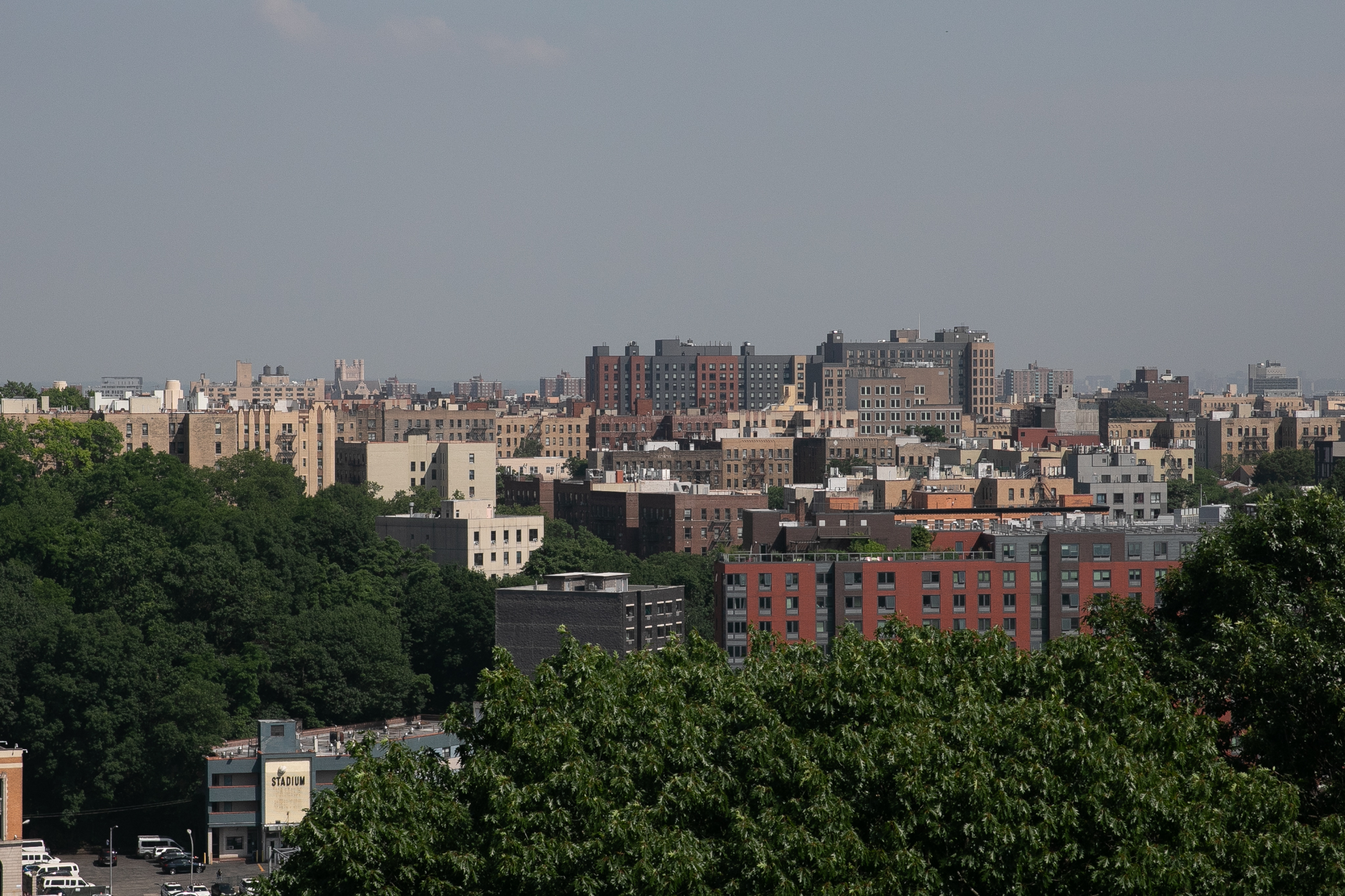
Asheville Watchdog’s open meetings lawsuit against city can move forward, judge rules
He dismisses part of complaint filed against water committee that was formed in wake of 2022-23 outage
by ANDREW R. JONES August 14, 2025
Asheville Watchdog’s lawsuit alleging the city of Asheville violated North Carolina’s open meetings laws can proceed, a judge has ruled.
Judge Robert Ervin filed a brief order Aug. 8 affirming that The Watchdog and fellow plaintiff Sunshine Request, an Asheville-based public interest project that publishes results of public records requests, have standing in the case, rejecting arguments the city made in a July 25 hearing.
“We’re gratified that Judge Ervin rejected the City of Asheville’s attempt to brush aside our lawsuit, which we and our partners filed only after failing to persuade the city to honor both the spirit and the letter of the state’s open meetings laws,” Watchdog Executive Editor Peter H. Lewis said. “Public business should be conducted in public. Our goal in this legal action is to prevent future violations of Sunshine laws by city administrators.”
Asheville City Attorney Brad Branham declined to comment, citing the active litigation.
In April, The Watchdog and Sunshine Request filed suit in Buncombe County Superior Court over the city’s refusal to allow reporters and the public to attend meetings of the Independent Review Committee (IRC), which was created to examine a catastrophic water system failure over the 2022-2023 holiday season and to make recommendations to safeguard against future outages.
The city maintained the IRC was not an advisory body subject to open meetings laws, but the committee’s final report, issued in June 2023, included 24 recommendations to the City Council.
In his order, Ervin dismissed The Watchdog’s case against the IRC, agreeing with the city’s argument that the committee can’t be sued because it no longer exists.
“The motion is granted to the extent that the Defendant Independent Review Committee (IRC) is not a legal entity,” the judge wrote.
But the rest of the case can move forward, Ervin ruled, stating that the plaintiffs have standing because N.C. Gen. Statute 143-318.16(a) provides that “(a)ny person may bring an action in the appropriate division of the General Court of Justice seeking such an injunction; and the plaintiff need not allege or prove special damage different from that suffered by the public at large.”
“We look forward to having a court address the substance of our claims,” said Amanda Martin, a lawyer with the Duke University Law School’s First Amendment Clinic, which filed the lawsuit on behalf of The Watchdog and Sunshine Request.
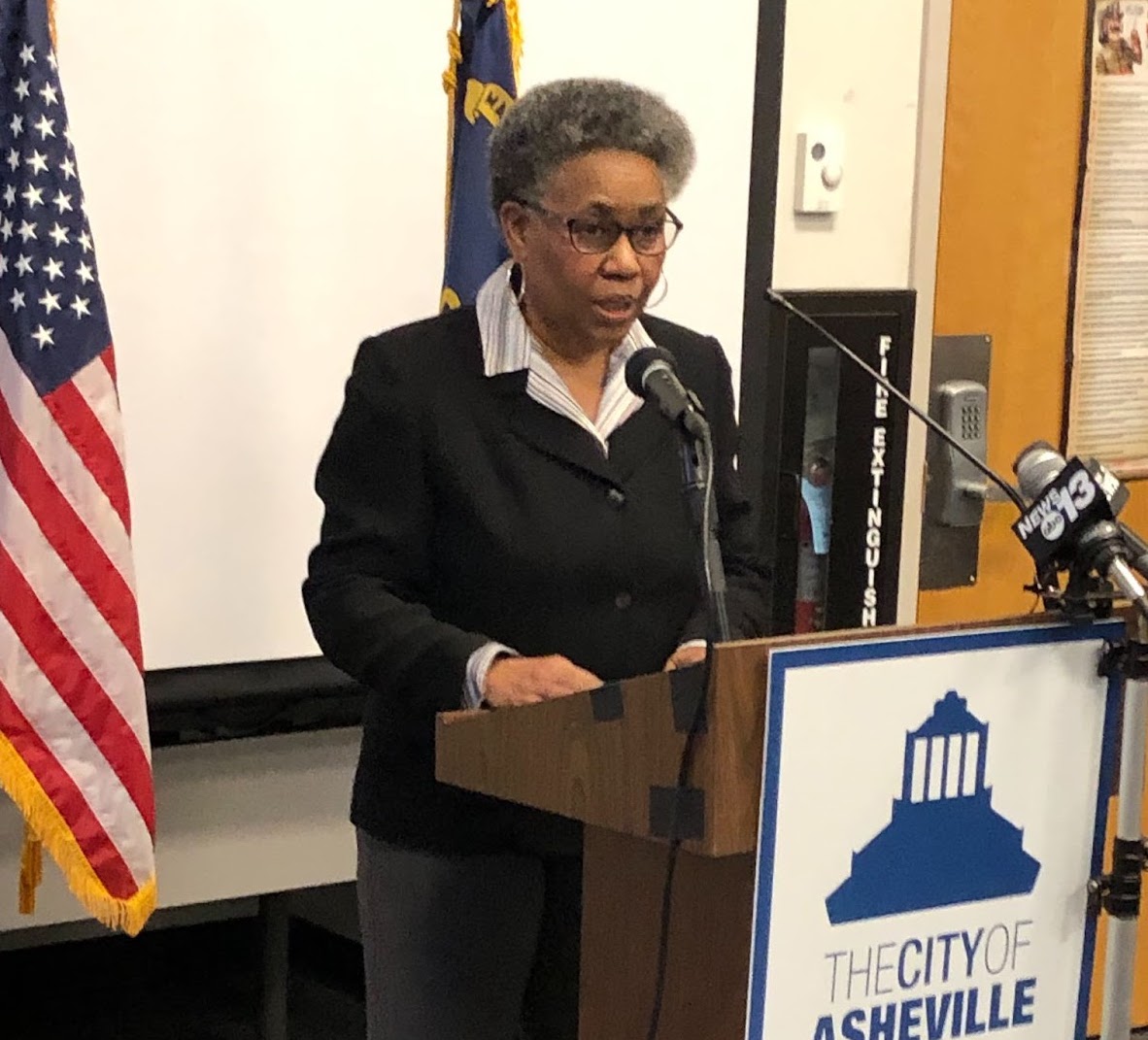
This article was originally published by Votebeat, a nonprofit news organization covering local election administration and voting access.
Texas redistricting standoff complicates preparations for March 2026 primary
Natalia Contreras, Votebeat
Aug 8, 2025 at 5:55am EDT
Votebeat is a nonprofit news organization reporting on voting access and election administration across the U.S. Sign up for Votebeat Texas’ free newsletter here.
With Texas legislators locked in a standoff over Republicans’ push to redraw the state’s congressional districts mid-decade, time is running out for election officials to prepare for next year’s primary without major disruption.
Planning for the March primary election is already underway, but election officials say they can’t move forward without finalized maps — and the first key deadline, mandated by the state, is coming Sept. 9.
Democratic lawmakers have pledged to remain out of the state in protest of the Republicans’ proposed congressional map, making an agreement unlikely by the end of the special session Aug. 19. The proposed map could still change, and if Gov. Greg Abbott calls another special session, the debate could extend well into the fall.
Without knowing where the boundaries will be drawn, election officials won’t be able to finalize decisions about polling locations or the number of election workers needed. Voters whose polling location changes will also need to be informed, and candidates who want a spot on the primary ballot also need the new boundary lines well in advance in order to familiarize themselves with the district and campaign. Candidates have to be residents of the district they seek to represent.
In a typical redistricting cycle year, the process of adapting to new maps is labor-intensive for election officials and takes months.
“Who knows if we’ll have enough time?” said Chris Davis, the voter registration director in Travis County. He said the Sept. 9 deadline is when county precinct chairs — who represent their political party in a precinct within their neighborhood — can begin filing to run in the primary. A new map could shift precinct boundaries entirely.
Candidates “need to know now which precinct they’re filing for,” Davis said. “If we have to split a precinct into two, they may end up being the chair of a new precinct.”
All other primary candidates can begin filing for a spot on the ballot Nov. 8. The filing deadline is one month later.
Election officials across the state have for months been updating precinct boundary lines to account for population growth, as required by state law in odd-numbered years. But that work is now on hold due to the redistricting battle, multiple election officials told Votebeat. If and when new maps get approved, they’ll have to start over.
Redistricting delayed a past Texas election
The push to redraw Texas’ congressional maps outside the normal 10-year cycle follows a push by President Donald Trump’s advisers to help Republicans maintain control of the U.S. House in the 2026 midterms. Historically, the party in control loses seats in midterm elections, and Republicans currently have a slim majority.
The Republican-proposed map targets Democratic districts in the Austin, Dallas, and Houston metro areas as well as in South Texas.
Texas election administrators have faced redistricting-related election delays before.
In 2012, the Texas primary election was delayed until the summer due to months of disagreement and litigation over the state’s congressional maps. The date was changed twice, filing periods for candidates were pushed back, and campaigns were left in limbo without maps.
Election officials worry the same thing could happen now — and say they may lose access to polling locations and workers they’ve already secured for April and March if delays persist.
“We secure polling locations at least six months in advance,” said Jennifer Doinoff, Hays County election administrator. “We are making sure workers have enough time to plan for the dates of the election. If the dates change, those workers may not show up. The work for us is going to have to start all over again.”
Differing impact for vote centers vs. precinct-based polling sites
In some counties, it’s more urgent now to know the exact number of polling locations they’ll need.
Nearly 100 of Texas’ 254 counties use vote centers, which allow voters to cast their ballot anywhere in their county on Election Day. Vote centers reduce the number of locations officials have to staff and equip on Election Day.
The rest of the state’s counties assign voters to specific precincts. The number of precincts determines how many polling locations they’ll be required to have and whether they’ll need more workers. The new maps are key to figuring out that step of the process.
Denton County, in North Texas, has precinct-based voting, and must make sure voters know well ahead of Election Day which location they’re assigned to.
Frank Phillips, the county’s elections administrator, said he needs the final map soon to assess whether voters need to be reassigned or if more polling sites are required. Without that information, both voters and candidates will be in the dark about their districts — and what races will appear on their ballots.
“They may show up at the polls expecting to vote for District 33 and now they’re voting for District 26,” he said. “That’ll create confusion like something’s not right on their ballot.”
Phillips and other election officials are also watching key deadlines for sending absentee ballots to overseas and military voters, which has to be done more than a month ahead of the election. They must also program and test the voting equipment — a process that hinges on knowing which precincts and races are in play.
Natalia Contreras is a reporter for Votebeat in partnership with the Texas Tribune. Contact Natalia at ncontreras@votebeat.org.
Votebeat is a nonprofit news organization covering local election integrity and voting access. Sign up for their newsletters here.
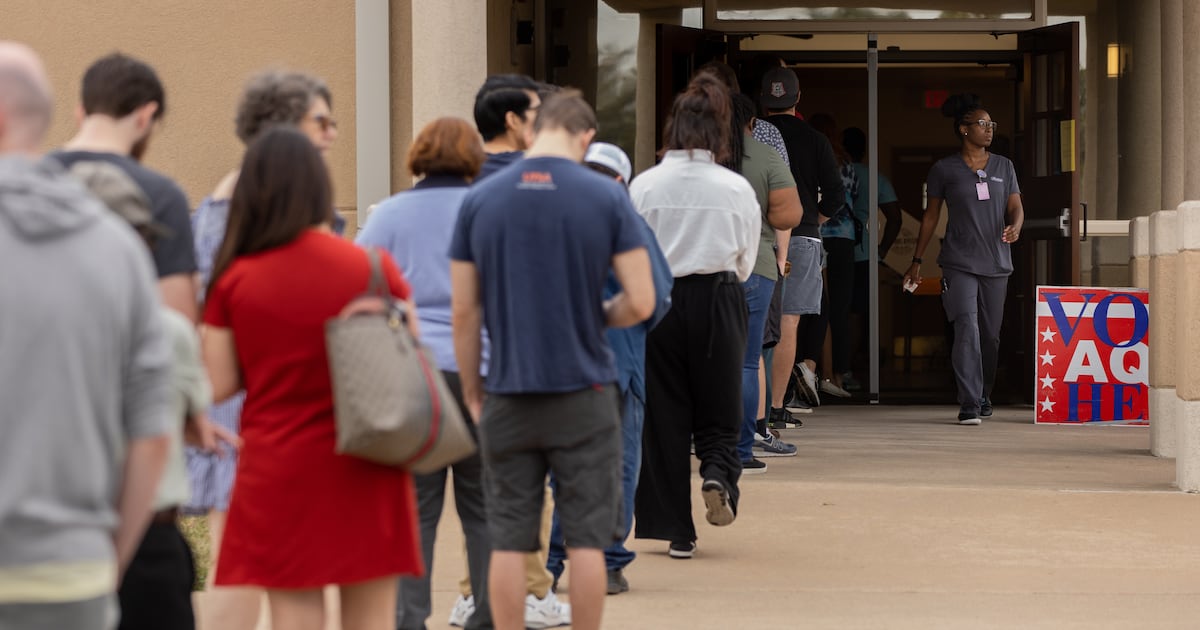
Beyond the field: Arizona Diamondbacks share mental side of baseball
Ben Wiley/Cronkite News
July 29, 2025
PHOENIX – Sports, especially baseball, have long expected players to remain stoic, tough and emotionally silent. But as mental health awareness expands across Major League Baseball, that old-school mentality is shifting.
Arizona Diamondbacks second baseman Ketel Marte was recently brought to tears after a fan made an insensitive comment about his late mother during a road game against the Chicago White Sox, sparking broader discussion about athletes’ mental health.
Boston Red Sox outfielder Jarren Duran similarly made headlines this spring when he confronted a heckling Cleveland fan who mocked his past suicide attempt, a struggle he discussed in a Netflix docuseries chronicling the team’s 2024 season.
In 2021, former San Francisco Giants minor league player Drew Robinson returned to professional baseball after surviving a suicide attempt that left him blind in his right eye. Robinson has become a powerful voice for the psychological well-being of athletes, currently serving as a mental-health advocate with the Giants.
All 30 MLB teams now employ mental health professionals. For the Diamondbacks, left-handed reliever Andrew Saalfrank says those resources are a vital part of staying focused amid the pressure of the game.
“We actually have a mental skills staff,” Saalfrank said. “Zach Brandon is here and then there’s another handful at the spring training complex.
Those are some really good resources to have, and even if things aren’t necessarily going bad, it’s just nice to have someone there to talk through your thoughts, how you process the game and how you handle the negativity and the failure of the game.”
A 2019 report in the British Journal of Sports Medicine revealed that 34% of current elite athletes and 26% of former athletes experience anxiety/depression, suggesting that professional athletes encounter a higher prevalence of mental health concerns than the general population.
Yet for years, athletes were discouraged from publicly discussing their mental health, largely because of cultural stigma, especially for men in professional sports.
In recent seasons, MLB players have become more open than ever about their struggles. While Duran’s story gained the most attention thanks to Netflix, he’s not alone. Former pitcher Trevor May opened up about his anxiety in 2023, his final MLB season, during which he was placed on the injured list. A year later, Texas Rangers relief pitcher Chris Martin, then with the Red Sox, also spent time on the IL because of anxiety.
Mental health is deeply tied to performance in a sport built on routine and superstition, which is why many players and coaches rely heavily on daily mental habits. Each routine is different, shaped by a player’s role, preferences and mindset.
Saalfrank explained the mindset he has developed to succeed at his job.
“As a reliever, you have to be ready to go every day,” he said. “That one day, you take off mentally, that is the day you’re going to get in there and things are not going to go well. I think for me, it’s just trying to treat every day the same and kind of doing the same preparations, so that way, when you do throw and when you don’t throw, there’s really not too much of a change.”
Meanwhile, a batter might have a bad at-bat, but then has to flush it quickly to play defense and prepare for their next plate appearance. Diamondbacks outfielder Alek Thomas, who enjoys listening to rap music to pump him up before the game, mentally prepares to stay focused through the ups and downs of nine innings or more.
“I think for me, it’s just forgetting about it,” Thomas said. “It’s hard to go from at-bat to at-bat forgetting about what happened, but those are the best type of hitters when they’re able to do that. I try to do that, but at least from a day-to-day basis, forgetting about what happened yesterday and just focusing on today.”
While MLB players receive much of the spotlight, so do the managers as they not only oversee all the personalities in the clubhouse, but also make in-game strategic decisions that are often heavily analyzed.
Diamondbacks manager Torey Lovullo is a strong proponent of mental health in baseball. His pregame routine is detailed and consistent, which keeps him focused and grounded.
“I take the same route to work, have the same cup of coffee on my drive in and call the same people,” Lovullo said. “It might be a little obsessive-compulsive, but it’s part of my process and it’s good for my mental health.
“Mental health is a huge part of this game, and I don’t care if you’re a player or a staff member, that team needs me at my best every single day, so I can’t be distracted. So I eliminate distractions, I block out the black noise, I have a black noise period of time in my day, where I expect it, and I welcome it, and I kind of encourage it, and once that’s done, I get into my own space.”
As the second half of the season grinds through the summer, the Diamondbacks are hoping to make a surge for a National League wild-card spot, a disappointing position for a team with preseason playoff hopes. Despite the team’s struggles, Thomas shared a reminder that just because the players are professional athletes, that does not make them any different from regular people when it comes to mental health.
“Maybe just take into consideration, you know, that we have the same lives as everyone else,” Thomas said. “We’re not better than anyone else, but we go through the same struggles of everyday life, whether that be family or something outside of that as well. So yeah, there’s definitely a lot to juggle whenever you’re here in the big leagues. You’re away from family, you’re away from pretty much everyone for most of the day, so it’s definitely tough in that aspect.”

Federal judge won’t halt lawsuit over Moore DSS handling of children with disabilities
by Lucas Thomae, Carolina Public Press
August 13, 2025
A lawsuit alleging that the Moore County Department of Social Services unlawfully institutionalized two siblings with intellectual disabilities will move forward, a federal judge in Winston-Salem has ruled.
Disability Rights NC filed the lawsuit last year on behalf of Moore County mother Rumina Slazas and her two children, referred to in court filings as J.S. and S.S.
The complaint alleged that DSS took custody of Slazas’ children while she underwent cancer treatment in 2022 and sent them to residential facilities rather than finding placement for them in an appropriate community setting.
[Subscribe for FREE to Carolina Public Press’ alerts and weekend roundup newsletters]
As Disability Rights NC attorney Holly Stiles sees it, Moore County’s actions violated the children’s civil rights under the Americans with Disabilities Act, as affirmed by the landmark U.S. Supreme Court decision Olmstead v. L.C.
That 1999 ruling held that unjustified segregation of people with disabilities constitutes discrimination and established guidelines for providing in-home and community services for disabled individuals.
Stiles told Carolina Public Press this is the first time that a county government is being held to account when it comes to their obligations regarding the Olmstead decision.
“This ruling also speaks to the fact that counties, when making choices of the services that are available, they too need to prefer services in the most integrated setting,” Stiles said.
The complaint states that in August 2022 Moore DSS took custody of Slazas’ teenage children, both of whom have significant intellectual disabilities, while Slazas was undergoing inpatient cancer treatment at Duke University Hospital.
Even after Slazas was declared in remission from cancer by her doctors and returned home, Moore County refused to return the children to her because DSS officials thought her cancer might return.
Rather than find community placements for the children, Moore DSS placed them in institutional settings. Slazas’ son, J.S., was sent to an intermediate care facility in Fayetteville and her nonverbal daughter, S.S., was eventually sent to a psychiatric residential treatment facility in South Carolina.
The lawsuit further claimed that Moore County abandoned S.S. at the UNC Health pediatric emergency department in Chapel Hill for nearly nine months while trying to have her placed at a psychiatric facility, before finding the one in South Carolina. That was despite UNC Health not accepting her for inpatient psychiatric admission and several psychiatric facilities refusing to accept her because she lacked a mental health condition.
Moore DSS eventually reunited the children with their mother in late 2023, more than a year after she was declared in “complete remission” from her cancer. According to the complaint, both children suffered mental and physical effects from their stays at the residential facilities.
Olmstead required public entities to provide services “in the most integrated setting” to people with disabilities when such placement is appropriate, the affected persons do not oppose such treatment and the placement can be reasonably accommodated.
The ruling is most often thought of as a decision which primarily affects state governments. The Supreme Court advised states to develop plans to transition people with disabilities into their respective communities.
Stiles said this lawsuit targets the “flip side of the coin” in the state-county dynamic. States might be obligated to make community-based services available, but up until now no legal action has required counties to choose those services for individuals in their custody.
Moore County’s attorneys argued in their motion to dismiss that the plaintiffs did not substantially show that community placements for the children could have been reasonably accommodated.
Disability Rights NC did name in its complaint several potential community-based placement options for J.S. and S.S., including the home of one of S.S.’s teachers who had previously been approved for temporary placement and a local group home.
The complaint also stated that S.S. had been approved for an emergency slot on the NC Innovations waiver, which is a Medicaid program for people with intellectual or developmental disabilities to receive community-based services.
Judge Thomas D. Schroeder denied Moore County’s motion to dismiss the lawsuit, writing in a July 23 order that the plaintiffs demonstrated a “plausible claim,” which is all that is needed at this point in the litigation process.
However, Schroeder signaled that he was dubious of Disability Rights NC’s claim that a specific community-based placement was ready and able to accept either of the children, calling its cited examples “far from robust.”
“Though the County makes a credible argument that identifying a specific, available option would discourage unmerited litigation, it has not provided any case law that clearly sets out such a requirement at this early pleading stage,” he wrote.
The lawsuit now hinges on two claims — one states that Moore County discriminated against Slazas by not reuniting her with her children as quickly as they could have, and the other is the Olmstead claim regarding the children's placements.
Both parties have entered into a months-long discovery period during which they will exchange information through written inquiries and depositions.
After the discovery period, the case could proceed to a trial by jury, or a party might submit a motion for summary judgment in which the judge would make a final ruling on the case. Stiles said she expects this case to stretch into 2026 before being resolved.
This article first appeared on Carolina Public Press and is republished here under a Creative Commons Attribution-NoDerivatives 4.0 International License.

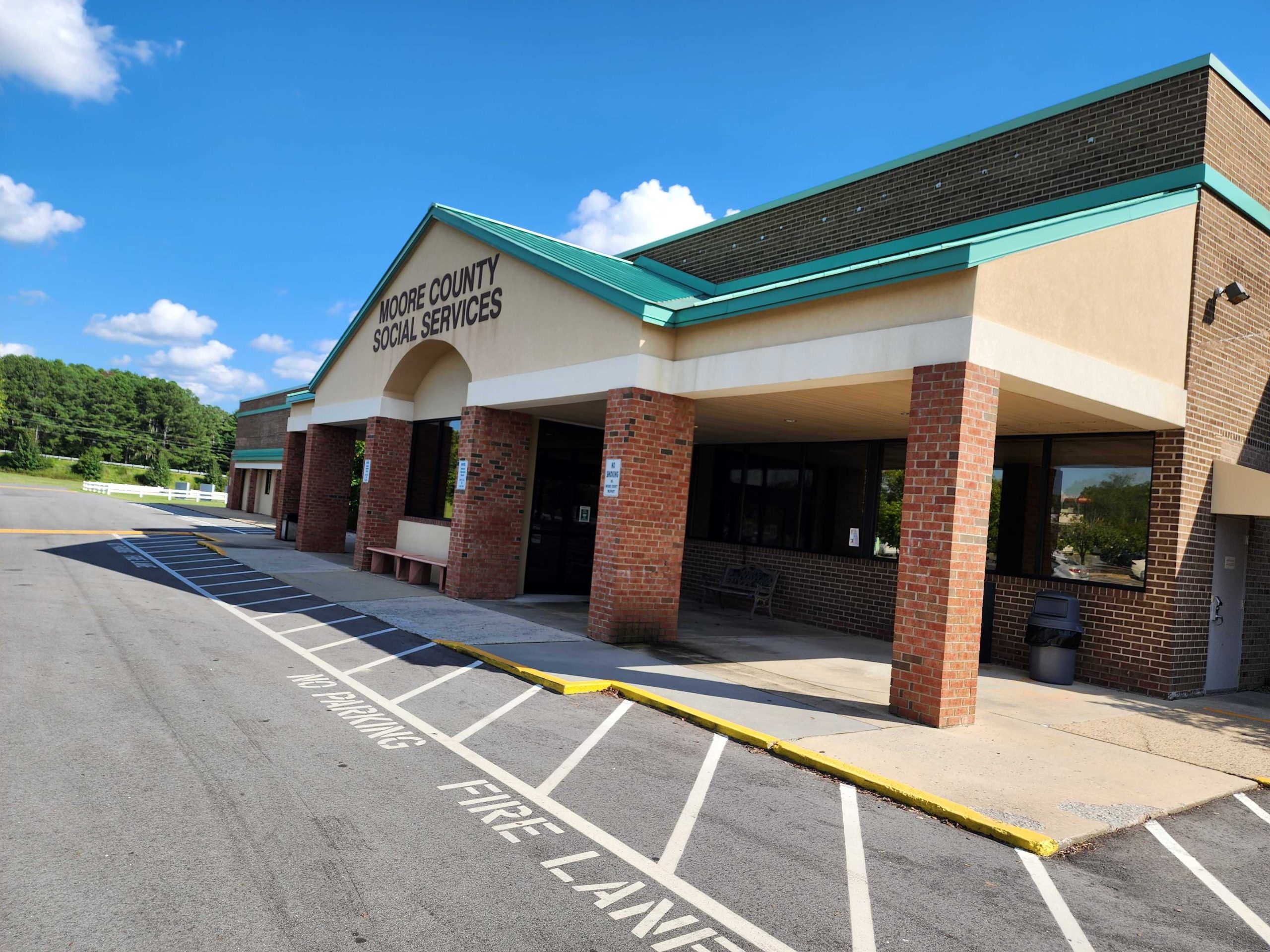
People with developmental disabilities seeing Medicaid coverage lapse more often
by Danielle J. Brown, Maryland Matters
August 8, 2025
An increasing number of people with developmental disabilities are falling through the cracks of Medicaid, going months without health care coverage because the state can’t keep pace with new applications and wrongful termination appeals.
Concrete numbers are hard to come by, but providers and developmental disability advocates attest to several dozen cases where recipients are left waiting to hear back from Medicaid officials about their coverage after submitting a new application or challenging what they believe are erroneous Medicaid terminations.
“Some participants, because of the backlog of scheduling cases to be heard, are waiting six months, eight months, an entire year to get resolved,” said Randi Ames, managing attorney for Disability Rights Maryland, which has been helping frustrated families and Medicaid recipients through various administrative hurdles.
Between limited staffing within the Maryland Department of Health and inadequate communication between branches of the agency, people with developmental disabilities are falling through the cracks and losing Medicaid coverage for crucial services.
“I know they’re aware of this,” Ames said of state officials. “They’re trying to work toward certain solutions, but we’re at that impasse where it’s just not happening quickly enough and people are being harmed.”
Ames and other advocates suspect that there are probably many more cases across Maryland, and her organization is considering legal action if those administrative delays continue.
The Department of Health did not respond to several requests for an interview, though it said in a written statement that agency is “working in partnership with stakeholders and providers to enhance and improve the process for these complex Medicaid eligibility reviews.”
Disability Rights Maryland has been advocating for clients to get Medicaid coverage amid administrative hurdles at the Department of Health. (Photo by Danielle J. Brown/Maryland Matters).
“People with developmental disabilities and the families and providers that care for them deserve accessible services and supports,” the department statement said. “It is a top priority of the Maryland Department of Health to continually improve the systems and processes for Medicaid waiver programs that provide services and supports to applicants, participants, and community providers.”
At issue are Medicaid waivers that allow people with developmental disabilities to get a wide variety of services, from live-in caregiver support to transportation, respite care, employment services and more.
Those waivers are jointly funded by state and federal governments, with each responsible for roughly 50% of the funding. The state is responsible for administering the program.
Each year, waiver recipients must prove to state health officials they are still financially eligible and still need coverage for their disability, in a process known as “redetermination.”
Over the last few years, the Department of Health and the Developmental Disabilities Administration have been struggling to pull out of several controversies while undergoing leadership changes and attempting to fill vacancies within those departments.
The Department of Health was also stung during the 2025 legislative session, as lawmakers made budget cuts to help close a $3 billion deficit. Those cuts included $164 million in fiscal 2026 from the Developmental Disabilities Administration, an agency that was experiencing unsustainable growth in enrollment and spending.
Despite the agency’s financial challenges, Ames believes that the backlog of application determinations is not “budget motivated.”
“Unfortunately, I think prior to the pandemic, the system was not great — but it was kind of functioning,” she said. Ames believes that the problems were exacerbated after the height of the COVID-19 pandemic, when the state had to determine whether 1.8 million Maryland Medicaid recipients, many added to the rolls during the pandemic, were still eligible in 2023, in a process known as the “Medicaid unwinding.”
She noted that during this time, the department lost experienced staff and added newer employees who had to learn the complex Medicaid determination process.
‘Erroneous’ disability waiver terminations stoke anger, confusion for family members
“When you don’t have the appropriate staff, if you have staff that is not knowledgeable or trained, it all starts to build up and cause this backlog,” Ames said.
Meanwhile, the health department’s top Medicaid and health care financing officer Ryan Moran is leaving the position this month for a top health care job in Washington state.
Providers taking on ‘uncompensated care’
The sudden loss of coverage is also taking a toll on providers of developmental disability services, many of whom have clients who have been receiving Medicaid care for years. Many providers have been pulling from reserves to continue that critical care for clients while they wait for coverage issues to be resolved.
The providers, many of them nonprofits, have been dropping hundreds of thousands of dollars into what may end up as “uncompensated care” while they work to get clients reinstated.
“The deficits, the uncompensated care, ranges from, maybe the lowest being $100,000 to the highest being around $7 million,” said Ande Kolp, executive director of The Arc Maryland. She noted that most, if not all, of the nine Arc facilities across the state have struggled with clients falling off Medicaid.
“It just kind of speaks to the continued chaos,” Kolp said.
David Erving, CEO of Makom, a nonprofit that provides residential options for people with disabilities, said that he’s noticed “a different level of responsiveness” from the state over the last two years when trying to resolve eligibility issues with his clients.
“Resolving these issues has historically always been very, very expeditious and very, very collaborative with our partners at the state, and we’ve seen some changes to that dynamic,” Erving said.
YOU MAKE OUR WORK POSSIBLE.SUPPORT
Erving said that some of his clients over the past year and a half were disenrolled from Medicaid due to a variety of “procedural terminations,” meaning that for one reason or another, the application for coverage renewal did not get processed — or people whose “Medicaid redeterminations did not go smoothly,” in Erving’s words.
Erving said his agency has provided more than $1 million in services for a handful of clients who lost Medicaid waivers over the past 16 months.
His most significant case was that of a 65-year-old man with Down syndrome and Alzheimer’s who lost his waiver status in February 2024. Makom continued providing care for the man as the facility worked to reinstate his Medicaid eligibility, until he died last month.
Erving said that, because of the man’s age, disability and significant health needs, Makom provided more than $650,000 in unreimbursed services during the man’s gap in coverage. He believes the department owes Makom for the services provided that would have been covered if the man was still on the Medicaid waiver.
The reasons people “fall off” of Medicaid vary.
Some providers reported issues with the health department’s mail notifications for annual renewals, meaning that families of the Medicaid recipient don’t know when to send over the application for redetermination.
Another common problem is when a recipient’s income appears “above the asset limit,” meaning they have a higher balance in their accounts than is allowed, even if it’s just by a couple dollars at the end of the month. They have to spend those extra dollars down to maintain coverage.
For these reasons and more, waiver recipients can be disenrolled from Medicaid, even if their financial situation and their needs have not changed. Those who would otherwise still qualify are supposed to have 120 days to appeal the termination and get reinstated.
Audit: DDA failed to collect nearly $119 million after shift to new payment system
It’s not unusual for there to be a lapse in coverage while these issues are worked out. Providers continue services and expect to be reimbursed when the client’s Medicaid is restored. But as Erving and other providers note, it’s taking longer to correct those issues.
Daria Cervantes, CEO for The Arc Montgomery County, says that about 50 out of 100 Medicaid waiver recipients in their community living program are in similar situations.
“The number continues to grow as people continue to go through the process and fall out of the waiver for our community living or residential program,” Cervantes said. “The fact that half the people in our community living program are out of the waiver, that’s extremely significant for us.”
Other administrative hurdles occur with new applicants. Ames described a client of hers who received disability services from the state school system, but had to apply for a Medicaid waiver as he aged out of school. His family had submitted an application, she said, but it’s “taking months and months to get that transition over.”
She said another client applied for a Medicaid waiver but never heard whether it was accepted. After Ames reached out to the department, she learned that the agency had not started the approval process at all until she called for an update.
Laura Howell, CEO for the Maryland Association of Community Services, says it’s hard to judge the scale of how many waiver recipients are stuck in this administrative limbo.
That said, Howell believes that officials within the health department seem interested addressing some of the concerns identified in the “complex” Medicaid redetermination process, though it is not clear what the path to fixing it will look like.
“We appreciate that the department is engaging in discussions with us,” Howell said. “But we continue to have a lot of questions about how this will be addressed and how we’ll make sure that people don’t have gaps in services and that community providers are paid as appropriate for these lifeline services that they provide.”
Maryland Matters is part of States Newsroom, a nonprofit news network supported by grants and a coalition of donors as a 501c(3) public charity. Maryland Matters maintains editorial independence. Contact Editor Steve Crane for questions: editor@marylandmatters.org.
City Council pushes back on NOPD requirements for second lines
by Jasmine Robinson, Verite News New Orleans
August 8, 2025
The New Orleans City Council pushed back Thursday (Aug. 7) against a New Orleans Police Department regulation that would have raised costs for second-line clubs over their use of trolleys in parades.
The requirements announced last month by the New Orleans Police Department would have enforced insurance coverage for the pulled trailers, or trolleys, as part of the licensing requirements for second-line parades. Social aid and pleasure clubs had pushed back against the requirements earlier this week, arguing that the insurance requirements were too expensive and that NOPD had communicated the rules with little time to spare before the 2025-26 second-line season, which begins Aug. 24.
After nearly an hour of public comment against the NOPD rules, the council unanimously adopted a resolution which formally asks the NOPD to enforce the rules used during the previous second line season for the time being until there are public and private meetings with stakeholders to establish clarity on permitting for trolleys.
“People on these floats need to be safe in ways that are reasonable, ways that are not going to make it completely impossible to afford to have second lines,” said City Council President JP Morrell. “Because if we do it the way that’s envisioned and what was proposed, many second lines are simply not gonna roll. And that’s not an acceptable outcome.”
"The NOPD’s primary responsibility is, and always will be, public safety—whether during Second Lines or any other event in our city. We hear the concerns raised by the community and City Council, and we remain committed to sitting at the table with all stakeholders to find common ground. Our goal is to protect the public while respecting and preserving the rich cultural traditions that make New Orleans unique," NOPD said in a statement after the meeting.
NOPD officials told the council Thursday that they set out to enforce the requirements because trolleys have become unsafe for passenger use. The NOPD wanted to push for proper insurance coverage that would ensure adequate safety precautions are in place for trolleys and other forms of transportation used in parades.
Department officials said the requirements were based off of a municipal ordinance that covers permitting for taxicabs, party buses and other vehicles for hire.
NOPD argued that for-hire trolleys should comply with the insurance requirements set by the city to apply to for-hire vehicles. But councilmembers were not convinced that trolleys should apply under the ordinance.
“The idea that we would treat these trailers as … for-hire vehicles is bizarre to me,” Morrell said.
Under questioning from councilmembers, NOPD officials acknowledged that they’re not sure whether or not trolleys fall within the city’s definition for such vehicles.
“We’re not sure how they fall, that’s not our expertise … but we are looking at that because they are hired vehicles that are inside the parameters of the second-line so we’re trying to find the most safety practices that we can find,” said NOPD Captain Anthony Micheu.
NOPD Superintendent Anne Kirkpatrick said that the City Council should make the determination on whether or not the ordinance applies in this circumstance.
“You tell me what it means and how you want it applied, and that could clean up a whole lot.” Kirkpatrick said.
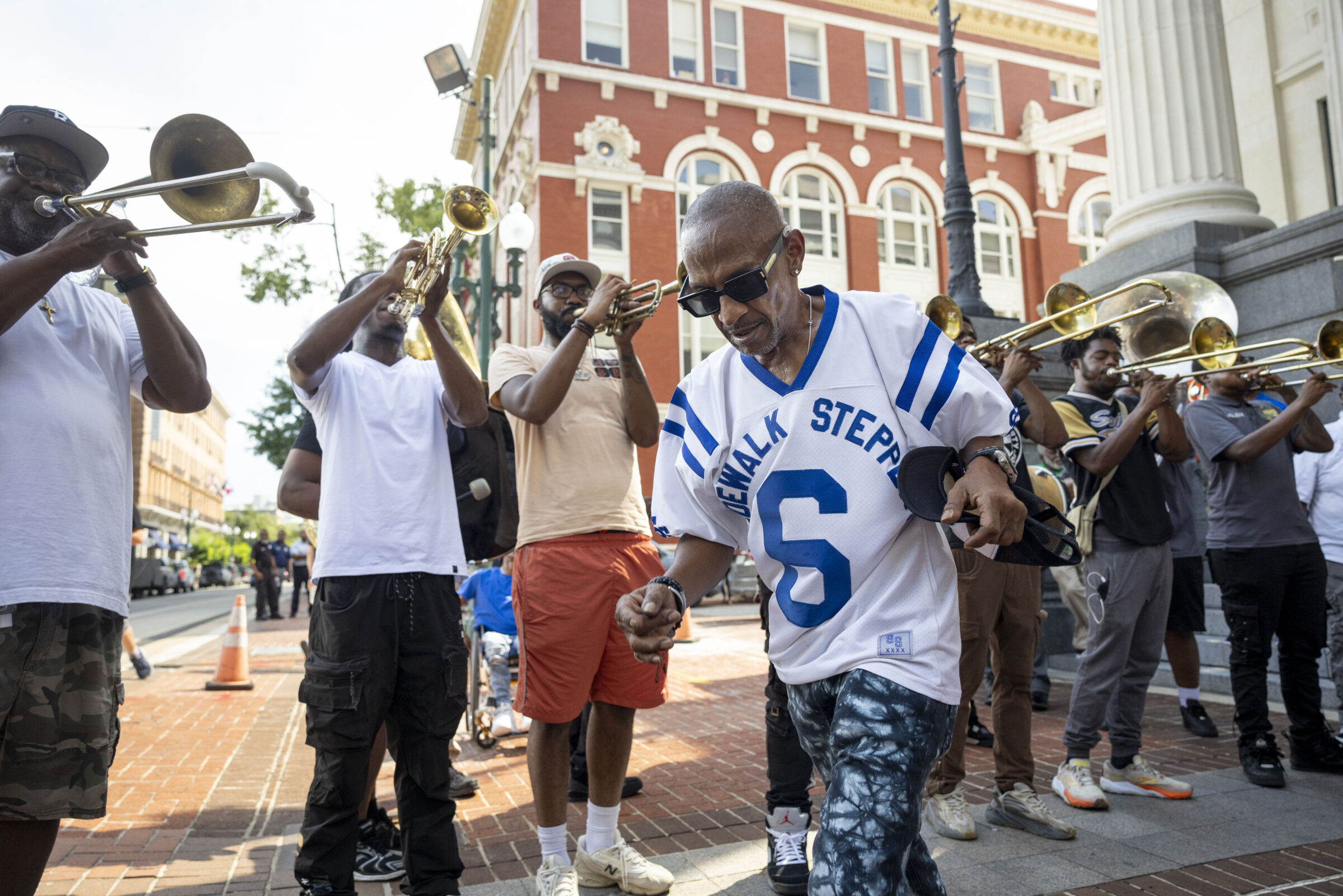
City Councilmember Oliver Thomas blasted the NOPD for enforcing the rules without community engagement with people involved in second-line parades. A council resolution proposed on Saturday called for adequate community engagement prior to changes in enforcement of city regulations and policies. The council didn’t vote on it at Thursday’s meeting, but did amend another ordinance to expand the city’s Second-Line and Mardi Gras Indian Cultural Preservation Task Force to include representation from the city’s social aid and pleasure clubs.
“Let’s be intentional, let’s be mindful, let’s be deliberate in the steps. Get in the room with the folks who love the culture and want to save the culture,” Thomas said.
Perry Robateau, who owns a trolley rental business, said he was devastated when news first circulated about the new insurance requirements.
“We’ve been doing this all these years, and all of a sudden they came up with all of these new rules, setting standards so high that we can’t reach them, and they know we can’t reach them,” Robateau said.
Robateau said his trolley was booked for an upcoming second-line parade in September. He now feels assured that he can do business.
“I got one booked for next month. And I told the people, ‘I don’t know if I’m gonna be able to do it.’ But now I can tell them, ‘We outside,’” Robateau said.
This article first appeared on Verite News New Orleans and is republished here under a Creative Commons Attribution-NoDerivatives 4.0 International License.

Southern Baptists growing in Maine despite national decline
New Southern Baptist churches are being established in Westbrook, Orono and Richmond. Faith leaders see the lack of a historical foothold in the region as an opportunity for growth.
This story was originally published by The Maine Monitor, a nonprofit and nonpartisan news organization. To get regular coverage from the Monitor, sign up for a free Monitor newsletter here.
By Sean Scott
Published on: August 10, 2025
When Lance Satterwhite rented a U-Haul and left his home in Texas for central Maine, he and his family didn’t yet have a place to live.
“We loaded up and headed this way, and along the way we finally got in touch and ironed out a lease,” Satterwhite said. “It was really cool because once we got here, we saw that it was God’s provision.”
The Satterwhites moved to Maine this summer to establish a new Southern Baptist Convention church in Orono, which they’re calling Stillwater Baptist Church. It is one of three Southern Baptist churches — or “church plants,” as new congregations are called — set to begin services in the state this year.
While the Southern Baptist Convention has faced declining membership nationally, its popularity in Maine has surged in recent years, along with other evangelical congregations.
The growth, which at a few thousand people is a relatively small slice of the population, comes despite Maine’s status as one of the least religious states in the country and the convention’s conservative stances on social issues, which cut against Maine’s laws on abortion, same-sex marriage and gender identity.
Some Southern Baptist leaders see the lack of a historical foothold in the region as an opportunity, and cite political tension as contributing to the denomination’s growth across the state.
A growing faith — regionally
Southern Baptist churches in Maine saw their membership triple between 2010 and 2020, according to the Association of Religion Data Archives, from around 2,700 adherents to more than 8,100. Non-denominational evangelical Protestants also saw significant growth, jumping roughly 75 percent.
More recent data from the national convention’s 2023 annual report found that Southern Baptist churches in New England grew by 10 percent between 2018 and 2023. New England is the smallest region for the faith, but the only part of the country where adherence is on the rise.
Nationally, membership has declined to its lowest levels since the late 1970s. Lifeway Research, an evangelical research firm that analyzed the data, found that Maine had the highest state growth in the nation at 19 percent between 2018 and 2023. However, Maine was one of 10 states with fewer than 30 congregations, and Lifeway emphasized caution in analyzing such a small sample.
The growth is especially concentrated in Kennebec County, where the adherence rate was more than seven times the statewide average in 2020. Dan Coleman, lead pastor at Central Church in Augusta, said his congregation has swelled from about 70 people when he took over 14 years ago to more than 1,500 weekly attendees now.
So far this year, the church has baptized 100 people. The church also has a second location in the nearby town of China, and offers remote services in four correctional facilities and six nursing homes.
Each August, the church hosts Serve Central, sending members out into the community to work on volunteer projects nominated by the congregation. The church also hosts a variety of classes throughout the year, plus a free soccer camp for kids.
“We can’t just sit inside of our buildings and enjoy what we have and act as if it’s for us and us alone,” Coleman said, tying this outreach to the church’s growth.
Anna Grant, a member of Central Church, has been attending services in-person for the past two years. She first got involved after going through a divorce, when she applied for a Christmas event put on by the church where parents in need attend a service and then shop for gifts for their children with a personal shopper.
Now she’s at the church every weekend, and volunteers at that same event.
“I was able to shop with families and really build connections and understand where they were at and to pray with them in the hopes that, you know, they find their way out or up or over whatever is going on,” Grant said. “I got to share my testimony with people, and that was a really big step for me to allow myself to be that vulnerable with people I didn’t know.”
Andrew Whitehead, a professor of sociology at Indiana University and co-director of the Association of Religion Data Archives, said the Southern Baptist Convention’s smaller presence in New England makes shifts in attendance more noticeable. He also said people today are often choosing denominations based on political preferences, so the uptick in Maine could be due to people who lean right finding congregations that align with their political beliefs.
“Evangelical, it seems, has become more of a political marker than only a religious one,” Whitehead wrote in an email to The Maine Monitor. “It may be that folks are self-identifying with conservative religious identities as a way to signal their political beliefs.”
Southern Baptists and the Christian right
The Southern Baptist Convention has grabbed national headlines in recent years for its conservative policy positions, as well as for allegations of sexual abuse and controversy over its stance on women pastors. During a national meeting this summer, church delegates voted overwhelmingly to call for a reversal of the U.S. Supreme Court’s decision in Obergefell v. Hodges that legalized same-sex marriage. An internal report found that 64 percent of congregants and 90 percent of “key leaders” in the church are politically conservative.
Southern Baptist leaders have been divided over support for President Donald Trump, who has courted their vote and ushered in a number of policies aimed at conservative Christians. Former vice president Mike Pence spoke at the convention’s annual gathering last year, and Trump spoke virtually at a nearby event promoted to attendees. Last month, the president of the Ethics and Religious Liberty Commission, the Southern Baptist Convention’s policy arm, stepped down following criticism for not aligning closely enough with Trump’s agenda.
In Maine, state lawmakers and voters alike have embraced a number of socially progressive positions in the past decade. Maine was one the first states to legalize same-sex marriage through a voter referendum in 2012, despite challenges in previous years from religious groups. Abortion is legal with no waiting period up to the point of fetal viability, and Gov. Janet Mills signed a bill in 2023 that allows abortions after this point if deemed necessary by a doctor. This year, the state legislature voted narrowly and largely along party lines to reject legislation restricting transgender students’ participation in school sports.
Those policies run counter to tenets of the Southern Baptist faith. Mike Nerney, executive director of the Maine Baptist Association, sees the political opposition as an opportunity for the church, not a barrier.
“If the church is being the church, then it stands out even more when you’re in an environment that is supporting a lot of things that the Bible does not support,” Nerney said. “Now the problem is when a church chooses to stand out in a way that’s unloving. Love does not equal affirmation of something. I can love someone I disagree with.”
Isaac Thibodeau is a lifelong Mainer and the lead pastor of Redeemer Fellowship, a church plant in Richmond. The plant was started by New City Church in Bath and will become fully independent in late August. The first public services in the church’s newly leased space are set for October.
Because the Southern Baptist Convention hasn’t had a strong foothold in New England in the past, Thibodeau said church mission leaders have been especially focused on planting churches in the region. He also said the state’s more secular culture means those who show up tend to be quite committed.
“It makes the people who do say they’re Christians, generally they’re going to be more serious than nominal,” Thibodeau said. “I think that lends itself to a healthier church culture.”
Some churches have seen opposition. In Bath, Thibodeau said New City Church has faced review bombing online, opposition at public events and protestors at a regular Sunday service. Coleman said a couple protestors have occasionally shown up at the edge of Central Church events in the community but have not caused issues. Nerney was unaware of any regular protests at other Southern Baptist churches throughout the state.
Planting churches
Pastor Joel Miller felt a number of signs pushing him toward planting a church in Maine before moving to Westbrook last year to start Redeemer Church. The congregation is set to hold its first service in a space rented from the Westbrook American Legion hall in October.
In the year since Miller moved from Delaware to Maine with his family, he has focused on building a community and preparing to start Sunday services. Westbrook didn’t have an established Southern Baptist congregation, so Miller has spent a lot of time in town meeting people and inviting them to Bible studies.
“There’s an openness in Maine right now for people who are like, ‘Man, this isn’t working for me, and I’m willing to try something else,’” Miller said. “And then I think you have churches like Southern Baptist churches that are coming in and they’re proclaiming, ‘Man, Jesus is the way. What you’re looking for, you’re going to find that in Him.’ ”
The push for more churches in New England is intentional. Miller said the denomination has a growing awareness of the region’s increasingly secular population, and it’s seen as an area where new church plants can have the biggest impact.
The Southern Baptist Convention runs the Send Network, which provides logistical and financial support for church planters. The established churches that church plants spin off from also provide varying levels of support. Satterwhite’s original church in Texas raised money for his startup costs and still pays his salary. The Texas church is managing Stillwater’s finances until the church plant can hire a treasurer and set up an independent bank account.
A 2022 survey by the Evangelical Council for Financial Accountability found that church plants that survived for more than two years and had fewer than 100 attendees averaged $10,000 in startup costs and $60,000 in first-year costs, Christianity Today reported.
Thibodeau’s congregation in Richmond has attracted a number of young families. He estimates that they have roughly 20 children in the church so far, outnumbering the 13 adults. New City Church, where Redeemer Fellowship is planting from, has roughly 70 children and 60 adults.
“For a while, we were praying for some older people,” Thibodeau joked. “I think it gets back to the seriousness of people, taking the faith seriously and wanting that to affect every aspect of their life. I think Christian parents especially feel that pressure — and it’s a good pressure — to raise their kids well in their faith.”
And for Satterwhite, a former youth pastor, his biggest goal in Orono is to reach college students at the University of Maine.
At his first service on Aug. 3, a dozen people gathered in Webster Park along the shore of the Stillwater River — a church is its people, Satterwhite said, and he didn’t want to wait for a building.













